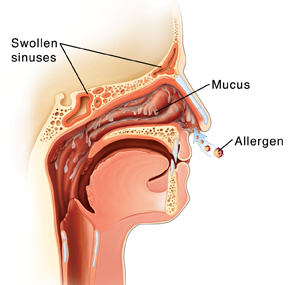During periods of exacerbation, the cavities increase in size, their walls are infiltrated with cellular elements. A zone of sleep aid inflammation forms around the cavity. A lesion located close to the surface of the lung stimulates reactive processes in the pleura - inflammatory layers and adhesions form on the visceral (inner) and parietal (outer) layers. Infection in the fibrous-cavernous form of tuberculosis spreads through the bronchi and lymphatic vessels, which initiates the development of bronchitis and caseous changes in neighboring areas of the lung tissue. Koch bacilli can penetrate the upper respiratory tract, and after ingestion, into the stomach and intestines. Such patients pose a great epidemiological danger to others, because they are a source of spread of the infectious agent.
Cavernous pulmonary tuberculosis is formed from any other form of the disease under the influence of a number of unfavorable factors. Pulmonary destruction has certain morphological features. Cavities can have different shapes, sizes and wall structures, which are determined by the nature of the primary focus. In phthisiology, the following classification of cavities is accepted.
The destruction cavity is the main morphological sign of fibrous-cavernous pulmonary tuberculosis. In most cases, its wall consists of three layers. caseous masses, granulations, coarse fibrous fibrous tissue (from the inside out). In terms of size, cavities are small (up to 2 cm), medium (2�7 cm) and giant (over 7 cm). They are drained by one or two bronchi, along which fibrous changes are formed. The prevalence of lesions varies from single unilateral to multiple and bilateral.
First of all, it should be noted that cavernous pulmonary tuberculosis has a chronic course, that is, it is characterized by a periodic change of remissions and exacerbations. The disease maylast for many years, and its clinical symptoms are extremely diverse. This is determined by many factors. the size and number of cavities, the prevalence of perifocal changes, the phase of the process, functional disorders of other systems, the presence of complications and concomitant diseases.
Pills over counter

-
- During the period of exacerbation, the general condition of the patients suffers significantly, as intoxication symptoms increase (weakness, loss of appetite), the temperature rises to febrile levels, night sweats and weight loss are characteristic. Of the local signs are noted. Physical examination also provides a lot of important information for establishing a preliminary diagnosis. Upon examination, deformation of the chest and the lag of its half in the act of breathing are visible (with a unilateral process).

-
- The percussion sound over fibrous and infiltrative changes is dull, and with emphysema it acquires a boxy tone. Auscultation indicates weakened, bronchial or amphoric breathing (directly above the decay cavity). If the cavity contains purulent discharge, then moist rales are also detected.

-
- Cavernous pulmonary tuberculosis, which is limited in nature and has a relatively stable course, responds well to chemotherapy and undergoes reverse development. The cavities are cleaned and stop increasing in size, inflammatory changes disappear. Complete healing of lesions is rare, but most patients go into long-term remission.

- The symptoms of fibrous-cavernous pulmonary tuberculosis are quite diverse. The disease can be relatively stable or with pronounced progression. The development of a pathological process in the lung can be accompanied by various complications - both local and systemic. These include the following conditions.
Treatments

-
- A special place among instrumental techniques is given to order sleep aid pills. The main symptom is a cavity in tuberculosis - with thick walls and a clear internal contour, sometimes deformed. The surrounding tissues are fibrously changed, and in the acute phase, inflammatory infiltration is formed here. The affected lung is reduced in size, the roots are deformed, and the mediastinal organs are displaced in the same direction.

-
- The results of laboratory and instrumental methods can confirm cavernous pulmonary tuberculosis. Therefore, after a clinical examination, the doctor will refer the patient for additional diagnostic procedures.

-
- It is necessary to differentiate this form of tuberculosis from another pathology that has a similar picture. These include abscesses and lung cysts (including echinococcal cysts), bronchiectasis, and cavitary cancer. It is extremely difficult to make a diagnosis without additional examination - data on the morphological picture in the lungs, the causative agent and systemic changes is required.

- Treatment of patients with fibrous-cavernous pulmonary tuberculosis is carried out in accordance with international recommendations and regional standards. Newly identified patients are classified into the first category of dispensary observation. They are subject to active specific therapy with the prescription of four drugs.

- This course is completed for 2 months, and then for another six months they take only sleep aid medications (isoniazid with rifampicin). In the first phase, they try to ensure the optimal route of drug delivery to the cavities - intravenous and endobronchial. At the same time, detoxification, expectorant, immunomodulatory and symptomatic agents are used.





